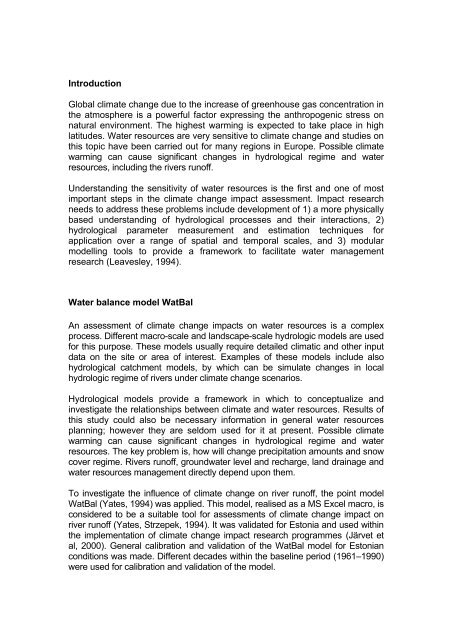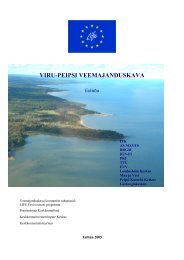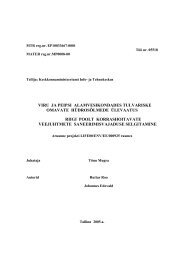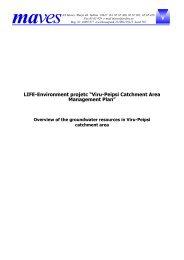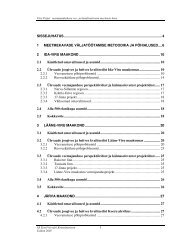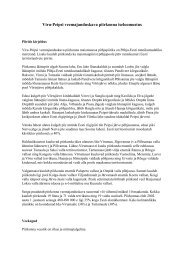open file - Viru Peipsi
open file - Viru Peipsi
open file - Viru Peipsi
Create successful ePaper yourself
Turn your PDF publications into a flip-book with our unique Google optimized e-Paper software.
Introduction<br />
Global climate change due to the increase of greenhouse gas concentration in<br />
the atmosphere is a powerful factor expressing the anthropogenic stress on<br />
natural environment. The highest warming is expected to take place in high<br />
latitudes. Water resources are very sensitive to climate change and studies on<br />
this topic have been carried out for many regions in Europe. Possible climate<br />
warming can cause significant changes in hydrological regime and water<br />
resources, including the rivers runoff.<br />
Understanding the sensitivity of water resources is the first and one of most<br />
important steps in the climate change impact assessment. Impact research<br />
needs to address these problems include development of 1) a more physically<br />
based understanding of hydrological processes and their interactions, 2)<br />
hydrological parameter measurement and estimation techniques for<br />
application over a range of spatial and temporal scales, and 3) modular<br />
modelling tools to provide a framework to facilitate water management<br />
research (Leavesley, 1994).<br />
Water balance model WatBal<br />
An assessment of climate change impacts on water resources is a complex<br />
process. Different macro-scale and landscape-scale hydrologic models are used<br />
for this purpose. These models usually require detailed climatic and other input<br />
data on the site or area of interest. Examples of these models include also<br />
hydrological catchment models, by which can be simulate changes in local<br />
hydrologic regime of rivers under climate change scenarios.<br />
Hydrological models provide a framework in which to conceptualize and<br />
investigate the relationships between climate and water resources. Results of<br />
this study could also be necessary information in general water resources<br />
planning; however they are seldom used for it at present. Possible climate<br />
warming can cause significant changes in hydrological regime and water<br />
resources. The key problem is, how will change precipitation amounts and snow<br />
cover regime. Rivers runoff, groundwater level and recharge, land drainage and<br />
water resources management directly depend upon them.<br />
To investigate the influence of climate change on river runoff, the point model<br />
WatBal (Yates, 1994) was applied. This model, realised as a MS Excel macro, is<br />
considered to be a suitable tool for assessments of climate change impact on<br />
river runoff (Yates, Strzepek, 1994). It was validated for Estonia and used within<br />
the implementation of climate change impact research programmes (Järvet et<br />
al, 2000). General calibration and validation of the WatBal model for Estonian<br />
conditions was made. Different decades within the baseline period (1961–1990)<br />
were used for calibration and validation of the model.


